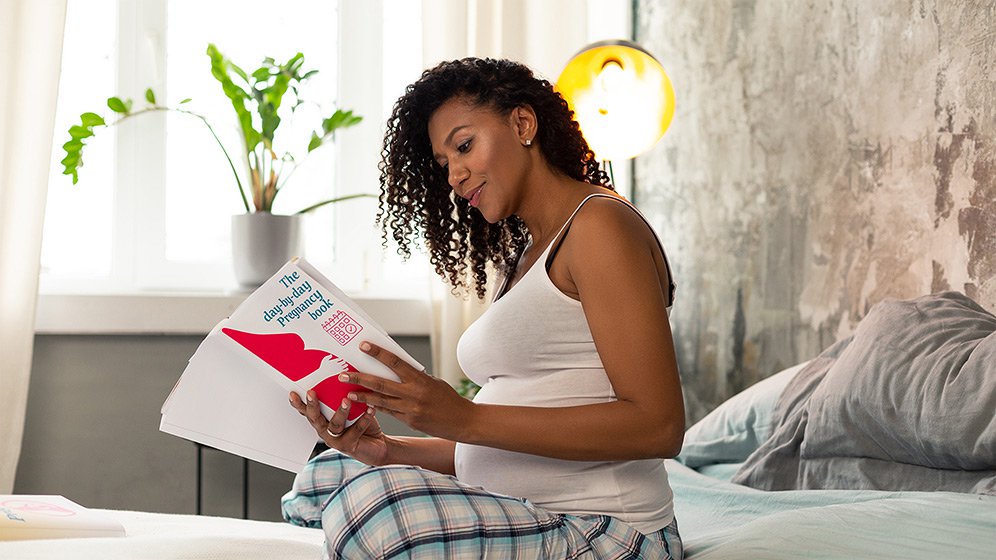Phases of Menstruation, Explained: From Period Pains to Peak Energy

Your menstrual cycle has four phases, each playing a role in preparing your body for possible pregnancy. Understanding each phase can help you tune into your energy levels, mood, and fertility, so you can support your body with more intention.
What is a Menstrual Cycle?
Your menstrual cycle is the monthly rhythm your body follows as it gets ready for the possibility of pregnancy. It’s measured from the first day of your period to the day before your next one begins. While the average cycle is 28 days, it’s completely normal to be shorter or longer. In addition, cycles can vary from month to month and often shift with age, stress and lifestyle.
What Are the Four Phases of the Menstrual Cycle?
The four phases of the menstrual cycle are the menstrual phase, follicular phase, ovulation, and luteal phase. Each phase is driven by hormonal changes that influence your body’s energy, mood and fertility. Let’s break down what happens in each stage.
The Menstrual Phase: Shedding & Resetting
The menstrual phase begins on the first day of your period. If pregnancy doesn’t occur, your body sheds the uterine lining. You may bleed for 3-7 days, and it’s common to feel low on energy, fatigue, or have mood swings.
This is a time for rest, reflection, and gentle movement – think stretching, walking, or yoga if you feel up to it. And if you’d rather curl up with tea and skip the workout? That’s okay too.
What to Eat During the Menstrual Phase
Comfort food cravings are normal during this phase, but nourishing your body is still key. If you’re feeling fatigued, keep meals simple, satisfying, and stress-free. This is the perfect time to show yourself a little extra care and compassion in the kitchen.
Because this phase involves blood loss, it’s a good idea to include iron-rich foods such as dark leafy greens, beans, and meat. Pair them with vitamin C–rich foods (like oranges, tomatoes, or bell peppers) to help support iron absorption.
Here are a few balanced meals to support your body during this time:
- Beef stir-fry with bell peppers and broccoli
- Spinach and chickpea salad with orange slices
- Salmon and quinoa bowl with brussels sprouts
- Turkey tacos with mango salsa and a squeeze of lime
The Follicular Phase: Preparing for Ovulation
The follicular phase starts the same day as your period and continues until ovulation, overlapping with the menstrual phase. As your bleeding slows and your estrogen levels rise, your body begins preparing for a potential pregnancy by rebuilding the uterine lining.
During this phase, estrogen stimulates the growth of the uterine lining (endometrium), while follicle-stimulating hormone (FSH) causes the follicles in your ovaries to grow. Between days 10 and 14, one of these follicles will mature into an egg (ovum).
This phase brings a surge in energy, making it a great time for more dynamic activities like running, dancing, or trying a new fitness class. Emotionally, you might feel more upbeat, curious or motivated.
What to Eat During the Follicular Phase?
With energy levels rising, this is a great time to get creative in the kitchen or plan meals for the weeks ahead. Try colorful, nutrient-rich foods that support your active lifestyle, such as grain bowls, hearty salads, or veggie-packed stir-fries. Be sure to include healthy fats from avocado, seeds, or olive oil, plus lean proteins like beans, chicken, or fish.
The Ovulatory Phase: Your Most Fertile Days
Ovulation typically happens mid-cycle – around day 14 in a 28-day cycle – when a surge of luteinizing hormone (LH) triggers your ovary to release a mature egg. This is the time you’re most likely to conceive.
You might notice cervical mucus becoming clear and slippery – this is nature’s way of helping sperm reach the egg. Energy and confidence often peak here, making it a great time for high-intensity workouts or important conversations (or… other activities).
For a more precise prediction of when ovulation is happening, the First Response™ Ovulation Calculator can help you pinpoint the exact time based on your cycle history, making it easier to track your fertility and plan accordingly.
What to Eat When Ovulating?
You may find your appetite shifts slightly during ovulation; some people feel hungrier, others less so. Either way, aim for balanced meals that combine fiber-rich carbohydrates, protein, and healthy fats to help maintain stable energy levels. Fresh fruits and vegetables, whole grains, beans, and lean proteins are all great staples to keep on your plate.
The Luteal Phase: Preparing for Pregnancy – Or Your Next Period
After ovulation, you enter the luteal phase, where your body produces more progesterone to support a potential pregnancy. If the egg is fertilized, the hormone hCG rises to help support the uterine lining. If fertilization doesn’t occur, estrogen and progesterone levels drop at the end of the luteal phase, signaling the start of your next period. This phase lasts from about day 15 to day 28.
Luteal Phase Symptoms
The luteal phase often comes with PMS symptoms like bloating, cravings, or irritability. It’s also common to feel more inward and reflective. Listen to what your body needs – this might mean slower workouts, extra rest or more self-care.
If you're trying to conceive, it’s important to be patient with your body and emotions during this phase. Symptoms after ovulation often mimic early pregnancy, and the only way to know for sure is to take a pregnancy test.
FIRST RESPONSE™ offers a variety of pregnancy tests to help you detect your pregnancy with confidence. The FIRST RESPONSE™ Early Result Pregnancy Test is sensitive enough to detect the pregnancy hormone hCG up to 6 days before your missed period1, providing over 99% accuracy from the day of your expected period2 for an early answer. For quicker results, the FIRST RESPONSE™ Rapid Result Pregnancy Test delivers results in just one minute, starting on the day of your missed period.
If you want multiple ways to confirm, the FIRST RESPONSE™ Multi Check Pregnancy Test Kit includes 3 tests: 1 EasyCup test with a built-in strip for results in 5 minutes, and 2 Rapid Result tests for results in just 1 minute. Whether you’re looking for an early answer or a quick result, FIRST RESPONSE™ has you covered.
What to Eat During the Luteal Phase?
Like the menstrual phase, it’s common to crave comfort food during the luteal phase. However, it’s still important to nourish your body with fiber, protein, and healthy fats to help keep your energy steady.
Here are a few easy, balanced meals and snacks to support you during this time:
- Tuna salad with avocado toast: fiber, healthy fats, and protein all in one.
- Leftover bowl: combine leftover meat, grains, and veggies, then drizzle with your favorite dressing or sauce.
- Hummus and turkey wrap: wrap deli meat, hummus, shredded carrots, and greens in a tortilla for a no-fuss lunch.
Craving something sweet? A yogurt parfait with fruit and granola is comfortingly creamy, sweet, and still packs in protein and fiber.
How Do You Tell What Phase of Your Cycle You Are In?
Tracking your cycle is key to understanding your body, whether you’re trying to conceive or want to feel more in tune with your natural rhythm. While apps and calendars can help, paying attention to your body’s signals – like energy, mood, and cravings – can also provide valuable clues. It may take a few months to get familiar with your cycle, but once you do, you can better align your lifestyle choices, like workouts and nutrition, with your body’s needs.
To track your cycle, note the following:
- When your period starts and ends
- Shifts in mood, energy and appetite
- Shifts in cervical mucus
- Basal body temperature (slightly increases after ovulation)
- Results from ovulation predictor kits
Over time, these patterns will become clearer, helping you better support your body, mind and fertility throughout the month.
2 FIRST RESPONSE™ Early Result and Digital Pregnancy Tests are 99% accurate at detecting typical pregnancy hormone levels from the day of your expected period. Rapid Result is 99% accurate at detecting typical pregnancy hormones from the day of your missed period. Note that hormone levels vary.
The content provided on this page is intended for informational and educational purposes only. It is not a substitute for professional medical advice, diagnosis, or treatment. Always seek the advice of a qualified healthcare provider with any questions you may have regarding a medical condition.



